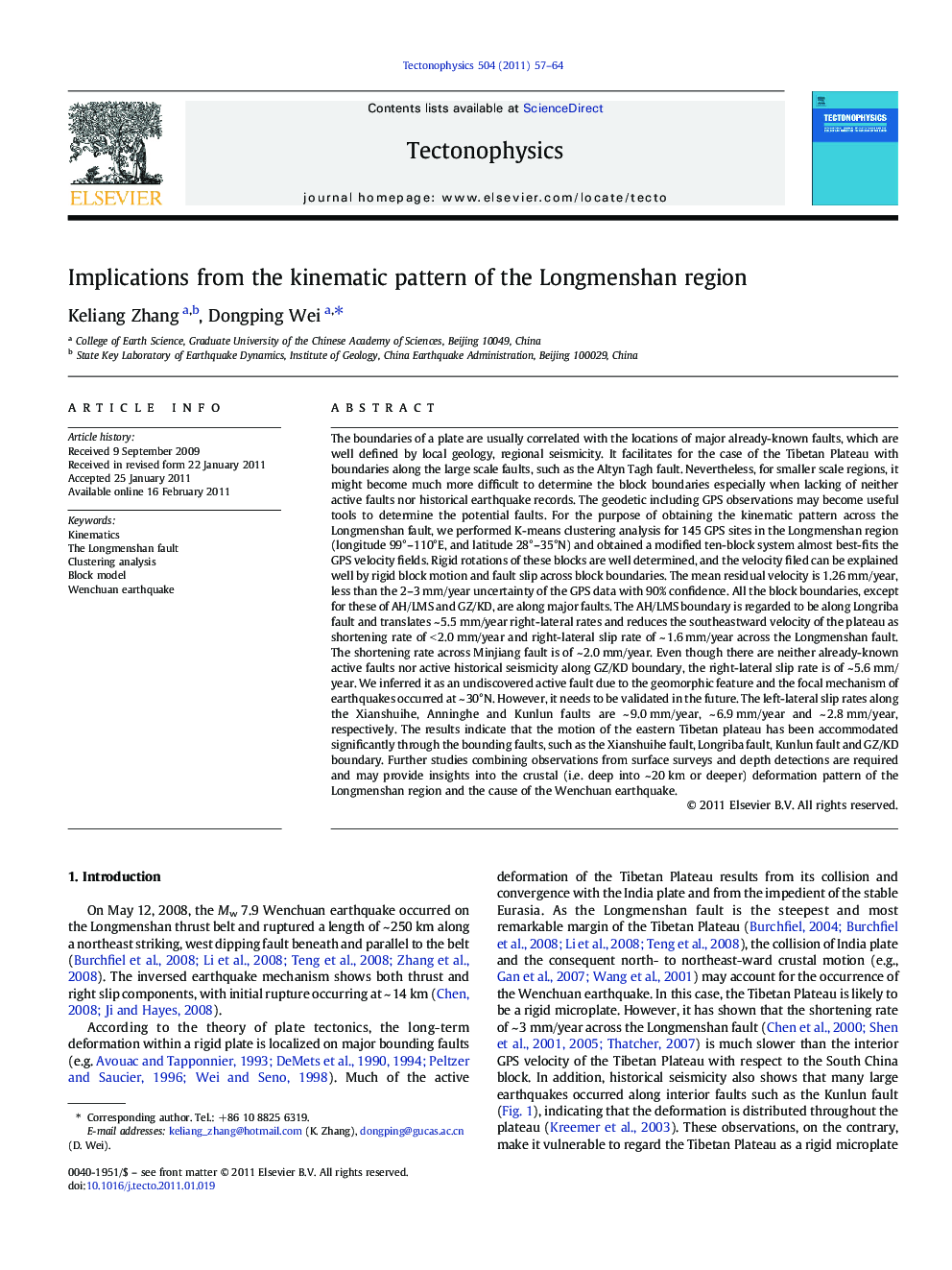| کد مقاله | کد نشریه | سال انتشار | مقاله انگلیسی | نسخه تمام متن |
|---|---|---|---|---|
| 4693177 | 1636845 | 2011 | 8 صفحه PDF | دانلود رایگان |

The boundaries of a plate are usually correlated with the locations of major already-known faults, which are well defined by local geology, regional seismicity. It facilitates for the case of the Tibetan Plateau with boundaries along the large scale faults, such as the Altyn Tagh fault. Nevertheless, for smaller scale regions, it might become much more difficult to determine the block boundaries especially when lacking of neither active faults nor historical earthquake records. The geodetic including GPS observations may become useful tools to determine the potential faults. For the purpose of obtaining the kinematic pattern across the Longmenshan fault, we performed K-means clustering analysis for 145 GPS sites in the Longmenshan region (longitude 99°–110°E, and latitude 28°–35°N) and obtained a modified ten-block system almost best-fits the GPS velocity fields. Rigid rotations of these blocks are well determined, and the velocity filed can be explained well by rigid block motion and fault slip across block boundaries. The mean residual velocity is 1.26 mm/year, less than the 2–3 mm/year uncertainty of the GPS data with 90% confidence. All the block boundaries, except for these of AH/LMS and GZ/KD, are along major faults. The AH/LMS boundary is regarded to be along Longriba fault and translates ~ 5.5 mm/year right-lateral rates and reduces the southeastward velocity of the plateau as shortening rate of < 2.0 mm/year and right-lateral slip rate of ~ 1.6 mm/year across the Longmenshan fault. The shortening rate across Minjiang fault is of ~ 2.0 mm/year. Even though there are neither already-known active faults nor active historical seismicity along GZ/KD boundary, the right-lateral slip rate is of ~ 5.6 mm/year. We inferred it as an undiscovered active fault due to the geomorphic feature and the focal mechanism of earthquakes occurred at ~ 30°N. However, it needs to be validated in the future. The left-lateral slip rates along the Xianshuihe, Anninghe and Kunlun faults are ~ 9.0 mm/year, ~ 6.9 mm/year and ~ 2.8 mm/year, respectively. The results indicate that the motion of the eastern Tibetan plateau has been accommodated significantly through the bounding faults, such as the Xianshuihe fault, Longriba fault, Kunlun fault and GZ/KD boundary. Further studies combining observations from surface surveys and depth detections are required and may provide insights into the crustal (i.e. deep into ~ 20 km or deeper) deformation pattern of the Longmenshan region and the cause of the Wenchuan earthquake.
Research highlights
► Clustering analysis helps to partition 145 GPS sites into ten groups.
► Rigid rotations of ten blocks are determined with the mean residual of 1.26 mm/year.
► Except for AH/LMS and GZ/KD, all block boundaries are along major faults.
► The GZ/KD boundary shows right-lateral slip rate of ~5.6 mm/year for the first time.
► Whether GZ/KD boundary is along an active fault needs to be validated.
Journal: Tectonophysics - Volume 504, Issues 1–4, 9 May 2011, Pages 57–64